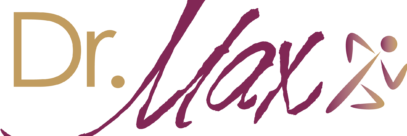Lumbar Spinal Stenosis - Treatment or Surgery
Contact Dr. Max Greig
Email: orthopedicdoctormx@gmail.com
A common cause of low back and leg pain is lumbar spinal stenosis. As we age, our spines change. These normal wear -and -tear effects of aging can lead to narrowing of the spinal canal. This condition is called spinal stenosis.
Degenerative changes of the spine are seen in up to 95% of people by the age of 50. Spinal stenosis most often occurs in adults over 60 years old. Pressure on the nerve roots is equally common in men and women. A small number of people are born with back problems that develop into lumbar spinal stenosis. This is known as congenital spinal stenosis. It occurs most often in men. People usually first notice symptoms between the ages of 30 and 50.
When Spinal stenosis occurs ?
Spinal stenosis occurs when the space around the spinal cord narrows.
This puts pressure on the spinal cord and the spinal nerve roots, and may cause pain, numbness, or weakness in the legs.
Arthritis is the most common cause of spinal stenosis.
Arthritis refers to degeneration of any joint in the body. When we are young, disks have a high water content (left). As disks age and dry out, they may lose height or collapse (right). This puts pressure on the facet joints and may result in arthritis. In the spine, arthritis can result as the disk degenerates and loses water con- tent. In children and young adults, disks have high water content.
As we get older, our disks begin to dry out and weaken. This problem causes settling, or collapse, of the disk spaces and loss of disk space height. As the spine settles, two things occur. First, weight is transferred to the facet joints. Second, the tunnels that the nerves exit through become smaller. As the facet joints experience increased pressure, they also begin to degenerate.
In children and young adults, disks have high water content. As people age, the water content in the disks decreases and the disks become less flexible. The disks begin to shrink and the spaces between the vertebrae get narrower
Conditions that can weaken the disk includes:
Improper lifting
Smoking
Excessive body weight that places added stress on the disks (in the lower back)
Sudden pressure (which may be slight)
Repetitive strenuous activities
Symptoms
Back pain
Numbness or tingling in buttocks or legs
Weakness in the legs or “foot drop”
State-of-the-art facilities
and the best medical physician and specialities
It has highly qualified specialist doctors and hospitals, which offer world-class care and service, with infrastructure and the best medical technology, to provide a reliable diagnosis of your medical problem, treatment and surgical intervention if necessary and follow-up to your rehabilitation and recovery.
Visit Us at
CMQ HOSPITAL RIVIERA NAYARIT
Av. Héroes de Nacozari 280 Bucerías,
63732, Riviera Nayarit
Contact US
Send an email:
orthopedicdoctormx@gmail.com
